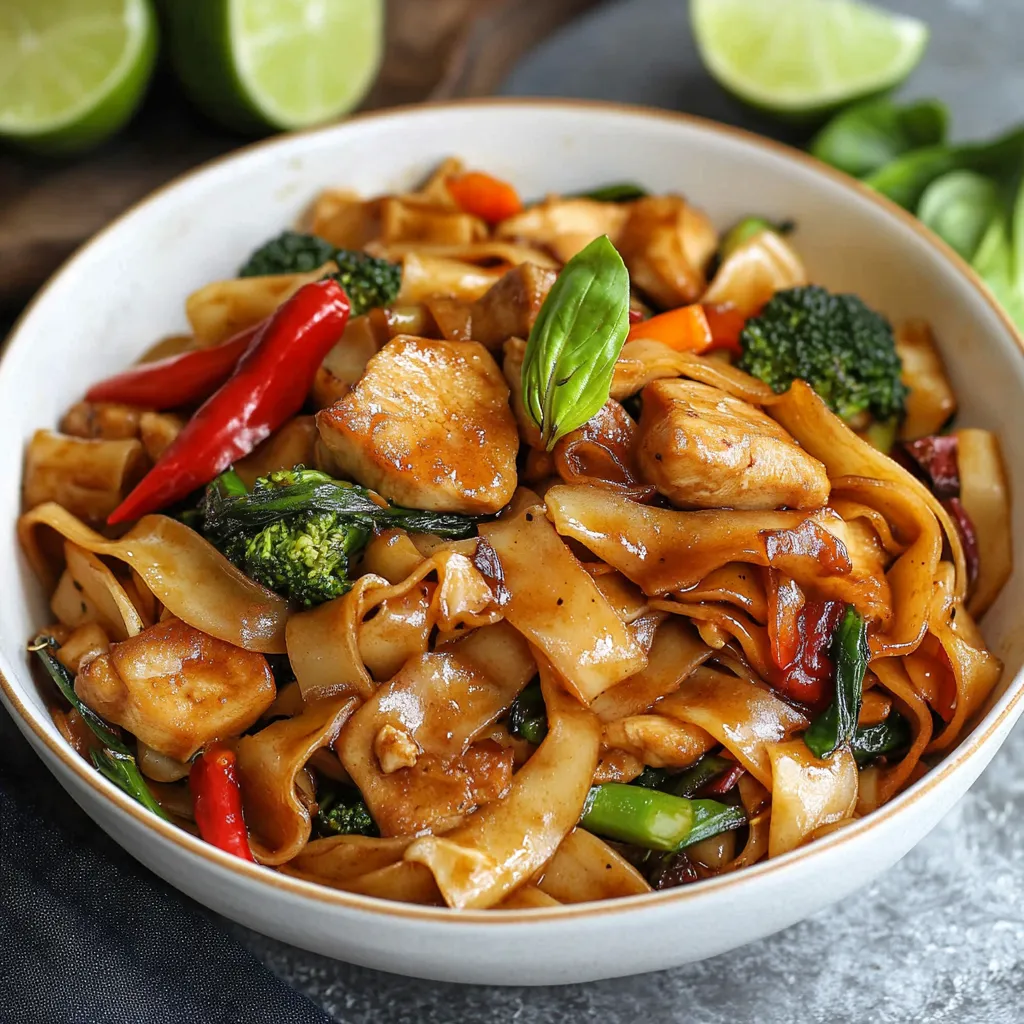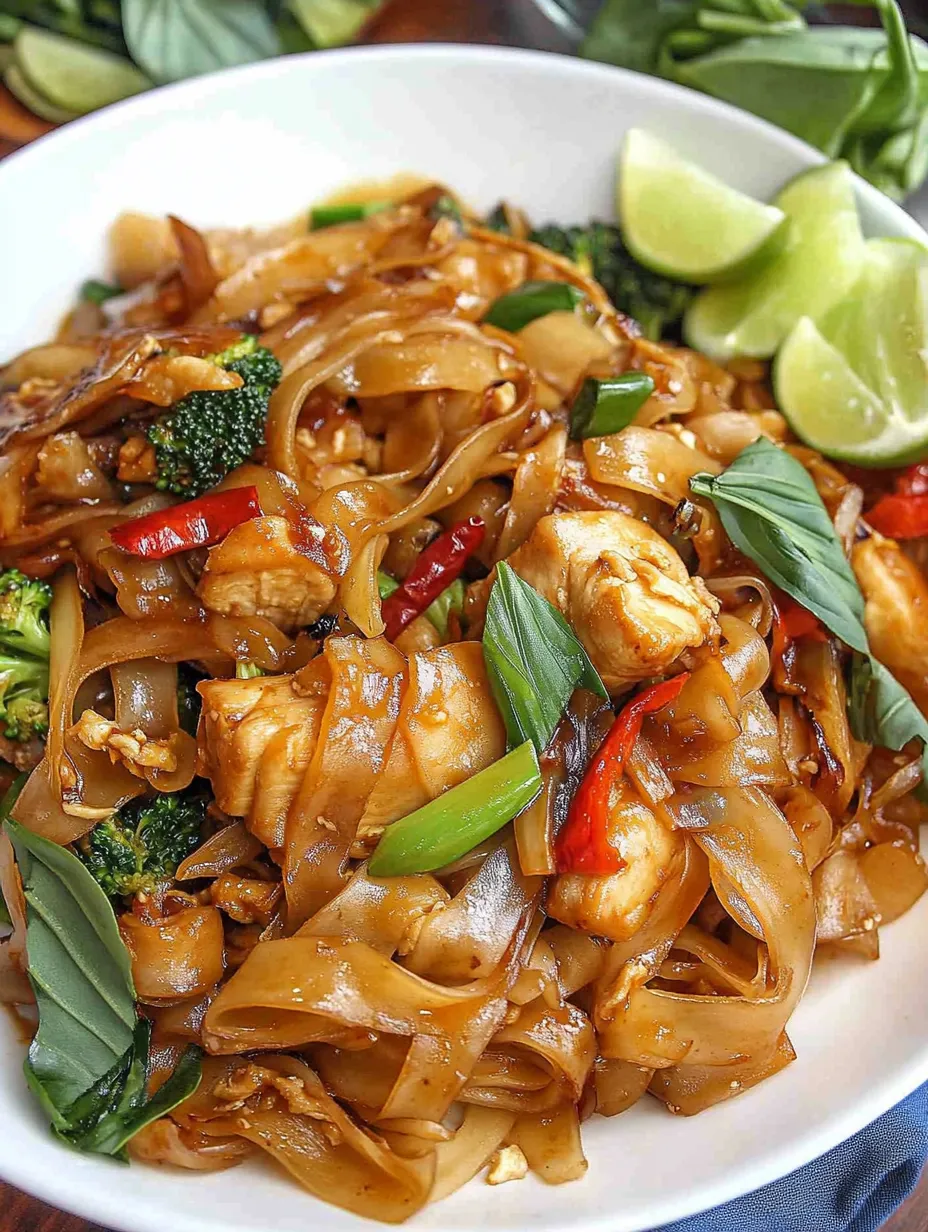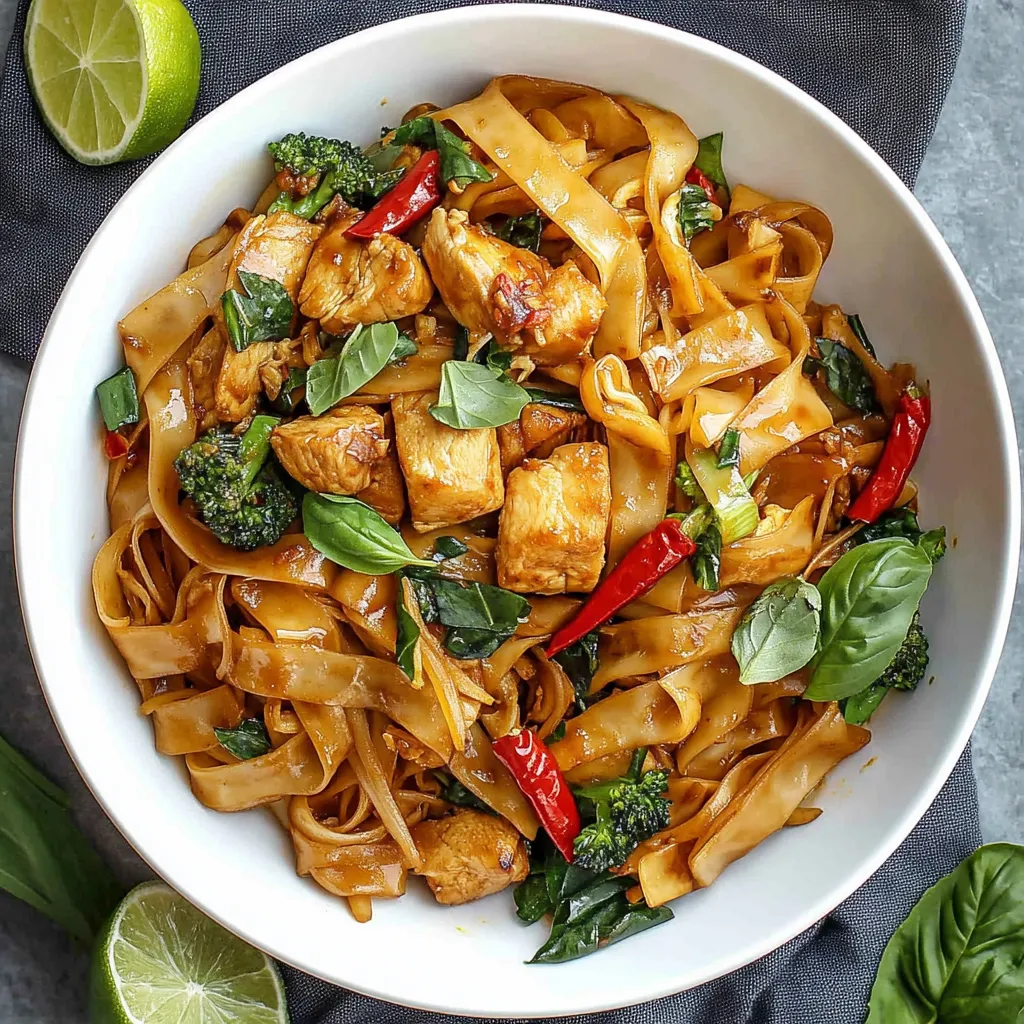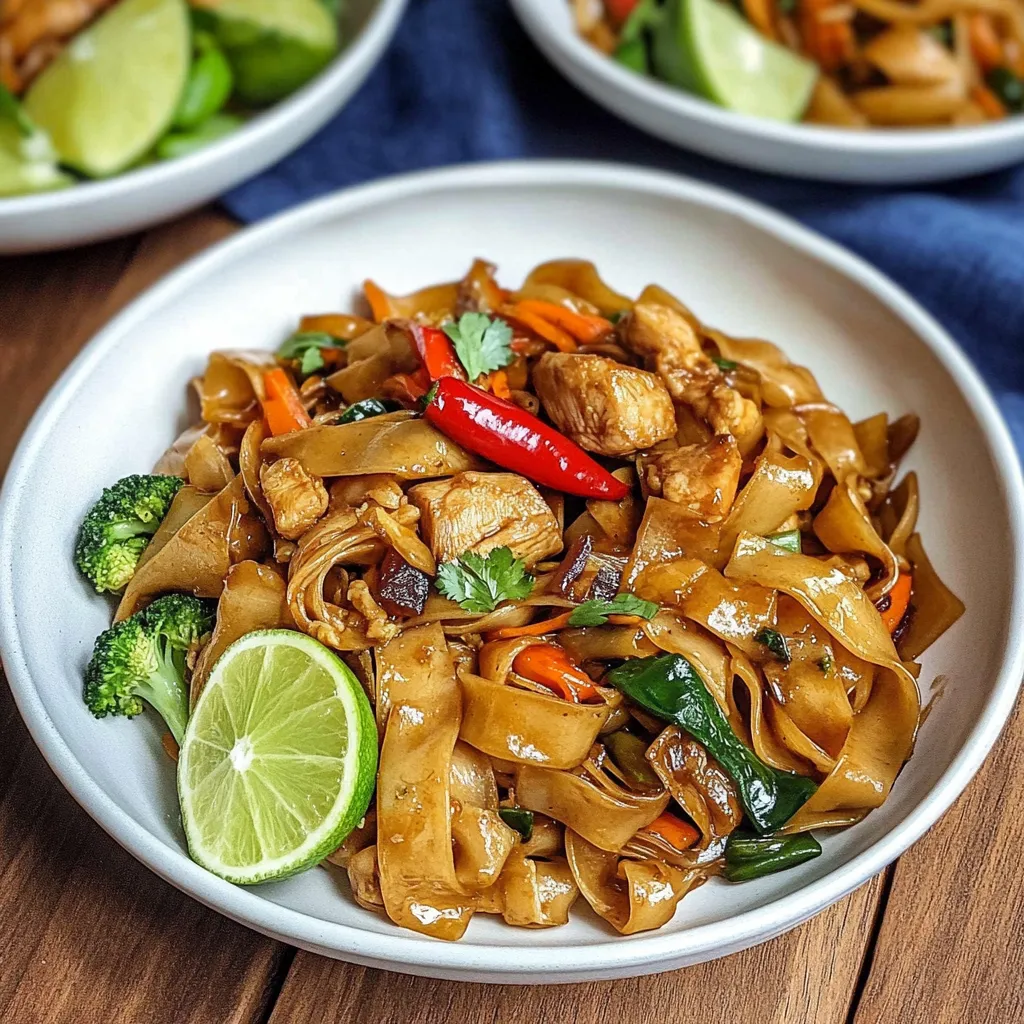 Pin it
Pin it
This dish hits all the right notes with its blend of sweet, savory, and spicy elements in these genuine Thai Drunken Noodles. Broad rice noodles get tossed at extreme temperatures with juicy chicken and snappy veggies, delivering that sought-after "wok hei" - that smoky quality that makes noodles from your favorite restaurant so darn good.
I've spent years getting this dish just right using both woks and regular pans, and I've found that success comes down to getting everything ready beforehand and keeping that heat cranked up while you cook.
Key Components
- Broad Rice Noodles: Get them fresh or dried (soak dried ones in warm water for 20-30 minutes)
- Chicken Thighs: Chop into 1-inch chunks so they cook evenly
- Thai Basil: You can use normal basil in a pinch but it won't taste the same
- Thai Bird Chilies: Try 2-3 for a medium kick
- Fresh Garlic: Chop it right before cooking
- Good Oyster Sauce: This gives you that deep savory foundation
Complete Walkthrough
- 1. Getting Noodles Ready:
- The way you handle your noodles can make or break your meal. For the dried kind, let them sit in warm (not hot) water about 20-30 minutes until they bend easily but aren't mushy. If you've got fresh noodles, just give them a quick cold water rinse. Make sure to drain them well and toss with a tiny splash of oil so they don't clump up. Never boil them first - they'll finish cooking in the stir-fry.
- 2. Getting Meat Ready:
- Cut your chicken thighs into same-sized 1-inch bits for even cooking. Add a little white pepper and salt. Let the meat warm up for about 15 minutes before cooking - cold meat will cool down your pan too much. If you want shrimp or tofu instead, just know shrimp needs about 2-3 minutes and tofu takes 3-4 minutes per side.
- 3. Mixing Your Sauce:
- Put together your oyster sauce, dark soy sauce, and light soy sauce in the right amounts. Dark soy makes it look nice and rich, while light soy makes it salty enough. Add fish sauce bit by bit, tasting as you go - you can always add more but it's hard to fix if you add too much. Your sauce should taste a bit stronger than you want your finished dish since it'll get milder during cooking.
- 4. Prepping Your Veggies:
- Cut everything before you start heating anything up. Slice onions into skinny wedges, cut bell peppers into 1-inch pieces, and break broccoli into tiny florets. Lightly crush Thai chilies to release their heat. Keep garlic and chilies separate since they go in first. Having everything chopped and organized before you start is super important for good stir-frying.
- 5. Getting Your Pan Hot:
- Whether you're using a wok or big skillet, getting it hot enough matters most. Heat until a water droplet sizzles away instantly - usually 1-2 minutes on high. Add oil and swirl it around. It should shimmer but not start smoking. If you're using a regular pan, you might need to cook in smaller batches to keep the heat up. Don't rush - proper heat gives you that special wok flavor.
- 6. Actually Cooking:
- Start with the flavor-builders - toss garlic and chilies into the hot oil, stirring all the time so they don't burn. Add chicken in a single layer, letting it get a nice sear before moving it around. Listen for that sizzling sound - it means your pan is hot enough. Cook veggies in order: onions first, then bell peppers, and leafy greens last. Keep everything moving.
- 7. Adding Noodles:
- Put in your drained noodles a bit at a time, tossing quickly so they don't stick together. Pour sauce around the edges of your pan, letting it bubble a little before mixing. Look for slight charring on the noodles - that's what gives you authentic flavor. Don't jam too much in at once; work in batches if needed.
- 8. Final Touches:
- Throw in Thai basil at the very end, just tossing until it wilts down. The heat from everything else will bring out its flavor. Give it a taste and adjust as needed - more fish sauce if it needs salt, sugar if it needs sweetness, or chili for more kick. You want to hit all four Thai flavor notes: salty, sweet, sour, and spicy.
 Pin it
Pin it
Keeping Leftovers
Put any extras in a sealed container for up to 3 days. When warming them up, add a tiny bit of water or chicken broth to keep things moist. Heat in a hot pan - microwaves just make the noodles mushy.
 Pin it
Pin it
Managing Your Flame
Knowing how to handle the heat is super important for nailing drunken noodles. Start really hot for that initial sizzle, but be ready to change things up. Watch what's happening - food should sizzle hard but not blacken. If you see too much smoke or burning, turn it down a bit or lift the pan off the heat for a second. You want to keep things hot enough to get some char but not so hot everything burns. Different stoves put out different heat, so get to know yours and adjust as you go.
Background Story
Pad Kee Mao, which means "Drunken Noodles," has an interesting story in Thai food history. Even though the name mentions drinking, there's no booze in it - people say it's perfect after a night out, or maybe it's called that because the chilies can make you feel tipsy from all the heat. In Thailand, street food vendors cook this over crazy hot flames, giving it that special charred taste that's hard to copy at home. Knowing this background helps you see why high heat and big flavors matter so much for getting the real deal.
 Pin it
Pin it
Closing Thoughts
This meal really captures what makes Thai street food so amazing - strong flavors, different textures, and that incredible wok hei. Whether you're feeding your family or just working on your stir-fry game, these drunken noodles are both fun to make and awesome to eat.
Frequently Asked Questions
- → Why’s it called drunken noodles?
- It doesn’t actually use alcohol! The name comes from either enjoying it after drinking or because its spiciness can make you feel wobbly.
- → Can this be made vegetarian?
- Definitely! Swap chicken with tofu or mushrooms, and try using vegetarian-friendly oyster sauce.
- → What if Thai basil isn’t available?
- Regular basil works in a pinch, but you’ll miss the peppery flavor. Add some ground black pepper to balance things out.
- → How spicy does this get?
- Traditionally, it packs a punch! But you can dial it down by cutting back on the Thai chilies or leaving them out.
- → Can I prep parts ahead of time?
- Sure thing! Chop the veggies and make the sauce one day early, but cook the noodles just before serving so they stay fresh.
